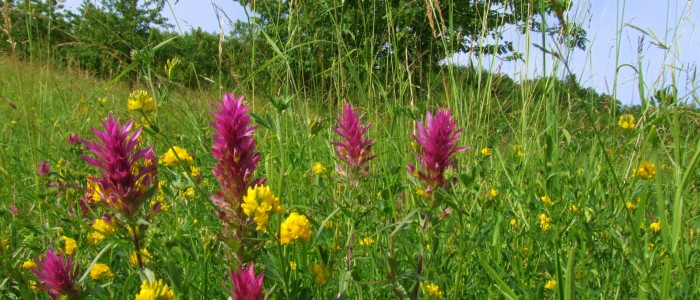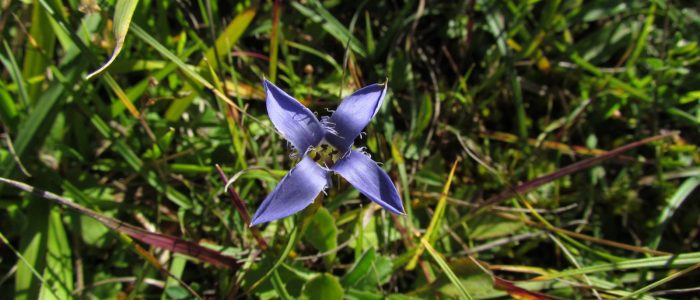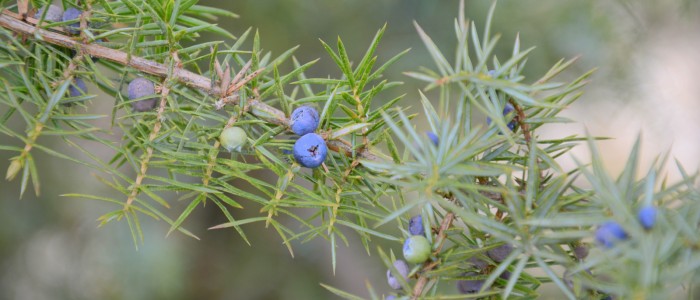Calcareous grasslands (FFH 6210)
Calcareous grasslands are among the most species-rich grasslands on dry to alternately dry, non-fertilized calcareous soils.
Historically, calcareous grasslands developed primarily on regularly grazed, dry sites, as they occur particularly in the Keuper areas in the east of Luxembourg. It was especially the grazing of sheep which contributed over the centuries to the development and stabilization of the vegetation on the poor soil.
The regular removal of nutrient and the selective browsing of sheep and goats promoted a species-rich vegetation in which tall-growing, spiky, highly aromatic or bitter tasting species could spread. Thistles with prostrate rosettes (Carlina vulgaris or Cirsium acaule) are characteristic of grazed pastures, as are the highly aromatic clumps with thyme (Thymus vulgaris) or the very bitter tasting gentians (Gentiana germanica and G. ciliata).
At the edges of areas or in places where the grazing livestock rarely pass, numerous species of orchids can be found in the rank vegetation.
These orchid-rich formations, which are classified as having priority status under the European Habitats Directive, tend to be associated with mown sites or places where the adjacent vegetation is encroaching.
This is where the various Ophrys, Orchis and other orchids which are under threat in Luxembourg have their main distribution.
Overall, the calcareous grasslands are among the most species-rich open land habitats of the Luxembourg countryside. Their particular importance for biodiversity is further enhanced by the numerous closely interlinked habitat types, such as dry stone walls, clearance cairns or rock sites, hedges, bushes or species-rich forest communities.
Juniper formations (FFH 5310)
A typical feature of old sheep pasture landscapes are extensive areas with juniper (Juniperus communis). Like many other typical poor-grassland species, juniper is browsed by sheep only when very young. Once the bushes reach a certain age, they can develop more or less undisturbed, so that dense stands can arise. To prevent this, the junipers used to be removed by the shepherds, or they mixed a few goats in with the sheep. Goats eat the shoots or peel the bark of juniper and other trees, so the pastures remained open.
In addition to sheep and goats, deer and rabbits likewise helped to keep the pastures open. With the decline of sheep and goat farming, the rabbits acquired a special role in curbing the juniper stands.
The extent to which rabbits contributed to the conservation of calcareous grasslands became clear after the spread of myxomatosis in the mid-1950s, when the rabbit populations in Europe collapsed. In subsequent years large juniper stands developed on many poor-grassland sites, a few of which still remain today.
Because European juniper stands are in steep decline, they too are protected under the Habitats Directive.
















